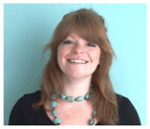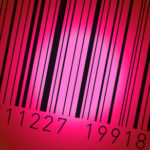Just like the ladies of Toronto have reclaimed the word slut , I think it is high-time that the research industry reclaimed the word bias and became proud to shout: “my bias is bigger than your bias.”
It is widely acknowledged that “in qualitative research bias affects validity and reliability of findings, and consequently affects business decisions.” (foucsgrouptips.com)
It is also widely acknowledged that the best way to deal with bias is to neutralise it and remove as many of the influencing factors as possible: remain a neutral moderator, don’t mention the brand in question, and, if you’re a client, never ever step from behind the 2 way mirror.
But the irony is this – the safe and bias-free methodology removes the human element from consumer research. And in my view that’s the worse bias of them all: it exposes business decision makers to risks far greater than any leading question.
If we step outside the world of consumer research for a moment –and look at what behavioural economists like Dan Ariely are saying – I think we can begin to see why the rational ‘focus group’ approach that ignores what it is to be human is a little absurd:
“…when it comes to understanding the physical world, we understand our limitations and we build around them. But for some reason when it comes to the mental world, when we design things like healthcare and retirement and the stock market, we somehow forget the idea that we are limited.”
His point is that all too often we remove the ‘human’ from decision making. He argues that if we accept the fallibility of humans, and build approaches with these cognitive limitations in mind, then we could end up designing a better world. If we use this logic, and accept human bias is an inevitability that we should harness as (oppose to neutralise) then we could also end up designing better consumer research.
Being a consumer is only a fraction of what it means to be human
Being a ‘consumer’ is only a fraction of what it means to be a ‘person.’ If we accept this as true it suddenly becomes irrational to sit behind the mirror, and it suddenly seems counter-productive to remove the true human element from business decisions. But what’s the alternative?
One option is to think about what would happen if we invite the whole of the person (and all of their inevitable biases) into consumer research. Is it possible that we might we end up understanding even more? Is it likely that brands will end up making even smarter decisions? I think so.
Of course, inviting the whole of the person to the research setting will lead to a new form of bias, but there us an opportunity to use this new bias to our advantage. Here’s how:
1. Ensure staff and experts interact and learn with consumers.
To make the client sit behind the glass wall is patronising to all involved. It’s insulting to the research participants who are left wondering why the ‘suits’ behind the screen (who claim to be so interested in what they have to say) are too removed to have a truly intimate conversation with them. It’s also insulting to assume that the clients have to be controlled behind a screen because they can’t be trusted to play nicely with consumers.
Beyond it just being convention I struggle to understand the reason for the focus group mirror, it certainly doesn’t remove bias by offering a ‘natural setting’ benefit. A much better solution is to bring the client from behind the mirror, and to coach them in the art of understanding and working with the ‘consumer’ to reach the conclusions they need.
2. Enlist consumers’ creativity & skills, not just their opinion.
One of the biggest misconceptions is that consumers are only good for reporting back, and that there is no point in harnessing their creative power. This might have been true when the market research discipline first developed, but consumers just aren’t the same as they used to be: increasingly savvy and aware of how brands work, consumers have a lot more to give these days.
What’s more, they’re interfering with your brand even without your consent. Up to 40% of consumers are modifying products (Von Hippel, Democrotising Innovation) making a strong case for consumer creativity. And the brands that are taking advantage of this by co-creating are winning – the rest of the research industry should also be celebrating consumer creativity and using this ‘bias’ to our advantage.
The proof is in the pudding
It isn’t the right solution for all circumstances: it will never replace market sizing, for example, but it will help brands uncover deeper insights and more creative ideas.
One man that’s used bias to his advantage is Jonathan Gadd, Strategy Director at Publicis. We worked together recently and used some of the above mentioned techniques to help uncover new insights. Here’s his take on the benefits of this approach:
“It was refreshing to move away from traditional focus groups, but more importantly it helped us get to better ideas and insights. There were two elements that dramatically changed the output for the better:
Firstly, the transparency and honesty with the participants changed the dynamic significantly. It meant I was able to learn with them and get a deeper understanding of their experiences. It felt like the honesty and transparency from us was rewarded with honesty and transparency from them.
Secondly, we shunned the dry question and answer format (which encourages overly-rational armchair marketing critics in my opinion) in favor of techniques that elicit consumer creativity. We were able to deduce really deep insights rather than just listen to respondents’ opinions on the subject”
Reclaiming the ‘b’ word
And so, like the sluts of Toronto, my belief that that Consumer Researchers should be proud of their biases. As an industry we have an opportunity to reclaim the ‘B’ word, and use it as a power of good.
 Anna Peters is a senior consultant at Promise North America
Anna Peters is a senior consultant at Promise North America



3 comments
I think some researchers forget that their research has any biases at all. They’ve become so comfortable with how they always do things, that’s hard for them to imagine there are any problems with it. That’s how we end up with these great divides where “quant is better than qual” and “panel is unrepresentative” and “focus groups are useless.” Every method has innumerable biases, and many you will never be aware of. As researchers, we need to smart and incorporate this into all of our thought processes.
The only problem we’re facing here is to consider about 200 biases… and at least not less than 30 basic of them
Hi Anna,
This is so true! And I think Jonathan Gadd from Publicis is spot on. When I first started to bring more transparency and ‘bias’ into qualitative research (e.g. focus groups, ethnographies and more creative group approaches), I felt like this naughty child, ignoring the rules of an authoritative parent. I felt like I was going to be reprimanded for being so………honest.
What I’ve noticed and learned very quickly, is that engaging with participants in a transparent and self-reflective way, yields a treasure of human insight I struggled to access using more ‘neutral’ and so-called objective approaches. It’s liberating for both clients and also for myself as a facilitator, to watch and engage participants as they move beyond stereotypical or conditioned responses. They start sharing stories, perceptions and belief-systems that really matter to them – and this is where the best insights lie.
As far as I’m concerned, once you go transparency, you never go back. Hope we talk soon…It would be great to see if my bias is bigger than your bias! 🙂